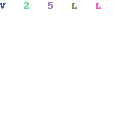Please read these terms and conditions ("terms", "terms and conditions") carefully before using LeavesAyurveda.in website (the "service") operated by LeavesAyurveda ("us", 'we", "our").
Conditions of Use
We will provide their services to you, which are subject to the conditions stated below in this document. Every time you visit this website, use its services or make a purchase, you accept the following conditions. This is why we urge you to read them carefully.
Privacy Policy
Before you continue using our website we advise you to read our privacy policy regarding our user data collection. It will help you better understand our practices.
LeavesAyurveda collects a variety of information that you provide directly to us. We process your information when necessary to provide you with the Services that you have requested when accepting our Terms of Service, or when we have obtained your prior consent, or where we have legitimate interest to process your information for security, testing, maintenance and enhancement purposes of the Services we provide to you, or for analytics, research and reporting purposes. Without your information, we cannot provide you with the Services you have requested or you may be limited in your use of the Services.
The types of information we collect will depend upon the Services you use, how you use them and what you choose to provide. The types of data we collect directly from you may include: - Name, Age, Name of the college, BAMS Passout year and email address - Optional information such as photograph, that you elect to associate with your account (your “Profile Information”) , Log-in details and password, if you create LeavesAyurveda account, Demographic information such as your gender, Country/Region, Social profiles such as Facebook page, Twitter, Google+, Website (URL), User-generated content you post in public online LeavesAyurveda forums (e.g. the LeavesAyurveda blog).
When you use our Service, our servers automatically record information that your browser sends whenever you visit our website (“Log Data”). This Log Data may include information such as IP address, browser type or the domain from which you are visiting, the web-pages you visit, the search terms you use, and any advertisement on which you click.
The security of your Personal Information is important to us, but remember that no method of transmission over the Internet, or method of electronic storage, is 100% secure. While we strive to use commercially acceptable means to protect your Personal Information, we cannot guarantee its absolute security.
Copyright
Content published on this website (digital downloads, images, texts, graphics, logos) is the property of LeavesAyurveda and/or its content creators and protected by international copyright laws. The entire compilation of the content found on this website is the exclusive property of LeavesAyurveda, with copyright authorship for this compilation by LeavesAyurveda.
Communications
The entire communication with us is electronic. Every time you send us an email or visit our website, you are going to be communicating with us. You hereby consent to receive communications from us. If you subscribe to the news on our website, you are going to receive regular emails from us. We will continue to communicate with you by posting news and notices on our website and by sending you emails. You also agree that all notices, disclosures, agreements and other communications we provide to you electronically meet the legal requirements that such communications be in writing.
Applicable Law
By visiting this website, you agree that the laws of the Chandigarh, India, without regard to principles of conflict laws, will govern these terms and conditions, or any dispute of any sort that might come between LeavesAyurveda and you, or its business partners and associates.
Disputes
Any dispute related in any way to your visit to this website or to products you purchase from us shall be arbitrated by state or federal court Chandigarh, India and you consent to exclusive jurisdiction and venue of such courts.
Comments, Reviews, and Emails
Visitors may post content as long as it is not obscene, illegal, defamatory, threatening, infringing of intellectual property rights, invasive of privacy or injurious in any other way to third parties. Content has to be free of software viruses, political campaign, and commercial solicitation.
We reserve all rights (but not the obligation) to remove and/or edit such content. When you post your content, you grant LeavesAyurveda non-exclusive, royalty-free and irrevocable right to use, reproduce, publish, modify such content throughout the world in any media.
License and Site Access
We grant you a limited license to access and make personal use of this website. You are not allowed to download or modify it. This may be done only with written consent from us.
User Account
If you are an owner of an account on this website, you are solely responsible for maintaining the confidentiality of your private user details (username and password). You are responsible for all activities that occur under your account or password.
We reserve all rights to terminate accounts, edit or remove content and cancel orders in their sole discretion.





